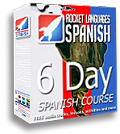|
|||||||||||
|
|
|
|||||||||
|---|---|---|---|---|---|---|---|---|---|---|---|
|
In the beginning, the Aztec city of Tenochtitlan could support itself. Since it was a small village, farming was managed through the chinampa method of agriculture, used throughout Mesoamerica. In the chinampa , flat reeds were placed in the shallow areas of the lake, covered with soil, and then cultivated. In this way, the Aztecs used much of the lake for agriculture. As the population grew, the economy of Tenochtitlan depended on high levels of economic support from surrounding areas. A large number of the city were farmers; the highest levels were between 100,000 to 300,000, at least half the people left the city in the morning to farm and come back in the evening. A large number of priests and craftspeople lived in the main part of the city. The bulk of the economy depended on extensive trade of necessary and luxury items. Tenochtitlan was a true urban center. There was a permanent population, it had a large and bustling market, and it had the beginnings of economic class. Groups in the city were divided into calpulli, which practiced a specific craft or trade, such as rope-making or pot-making. While there is controversy over the exact nature of the capulli, it seems to be the transition between kinship organization and economic class. The calpulli seemed to be arranged in ranks; there was the highest calpulli, another five calpulli that had schools for nobility, and then all the rest. Aztec merchants played a large part in the economy with the markets and trading with other peoples in the land. |
|||||||||||
|
|
|||||||||||
|
|||||||||||
